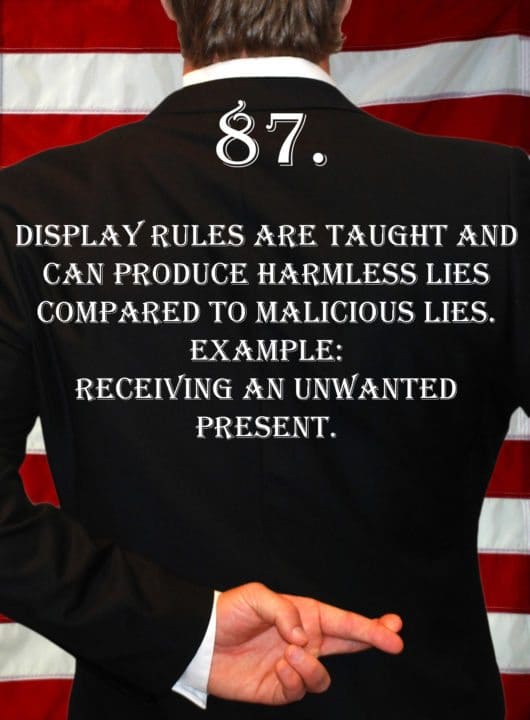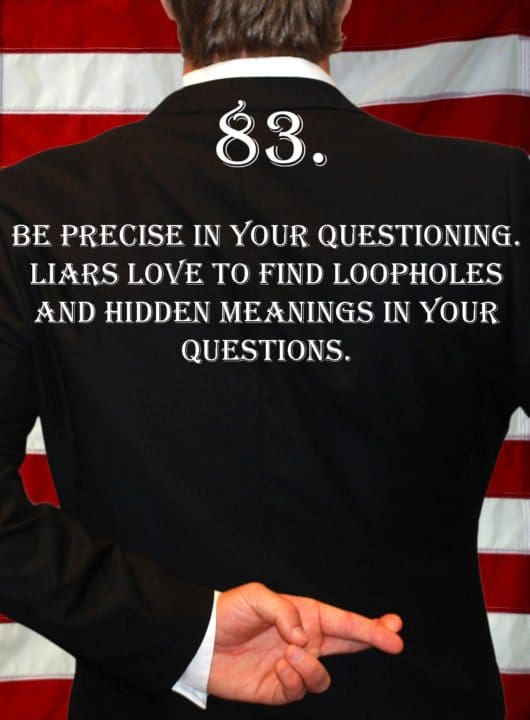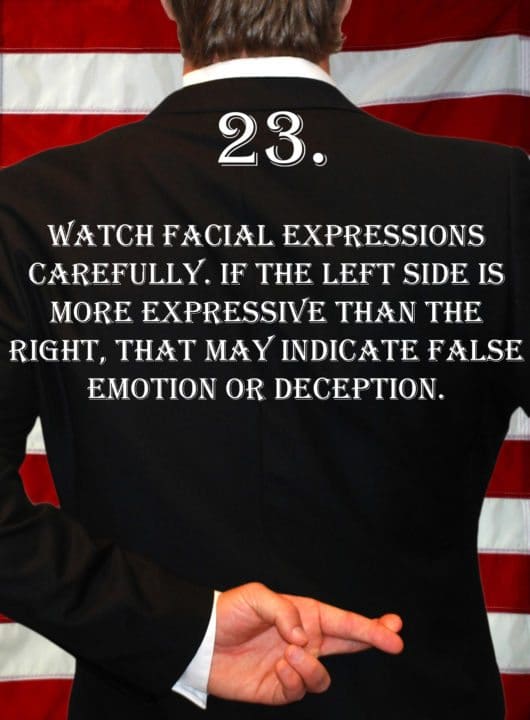
Deception Tip 22:
Seated liars will often lock their ankles and may even tuck them back in an attempt to minimize their body and block off the perceptions of others.
Listen To The Podcast!
E22 – Locked Ankles – Deception Tips Podcast – Click Here To Subscribe
Podcast Transcript
Hello and welcome to the deception tips podcast, where you will learn amazing cues to detect deceit that will help you to read people like never before- I’m your host, Spencer Coffman. Let’s get started.
Welcome to episode 22 of the Deception Tips Podcast. You’ve been on a great journey so far, listening to these podcasts and learning all of these different signs of deception. Hopefully, you are starting to notice these signs in yourself and in other people.
You’re starting to be more aware of body language and what is going on around you. I really hope you’ve taken advantage of the Deception Tips Blog, you’ve shared this with other people, and maybe have checked out the books I have available. They are all great resources that you can use to learn more about detecting deception and spotting lies.
Last time, we spoke about a sign of deception that was twofold. It was a combination of strategy where you can strategize on how you can get people to slip up AND a combination of behavioral leakage.
In addition, it was also a more advanced sign because it had a sign that took the form of micro-expressions. We spoke of how you can suggest answers, or you could suggest possibilities,- short possibilities- not long-winded answers, as in suggesting stories to people or playing on their story to get them to think that you are believing them more and to build rapport.
No, this was more of guessing quick, short things such as names or certain categories or ideas or events per se, that you could watch their reactions to your answers and based upon their split-second micro-expressions of surprise fear on their face you would know whether or not you guessed the correct answer.
Hopefully, you have taken into account that card trick example, and maybe have even practiced it a little bit, or worked out what you’re going to say or what you’re going to do.
It’s an excellent trick if you can master that you will learn so much about body language because you are constantly watching the person and spotting different signs and different tells. Don’t be afraid to get things wrong.
In that circumstance, what’s the worst that happens? You go through this whole ordeal and then you choose the wrong card. So what? Big deal. No one will remember it.
They may remember that cool trick. A week from now, or two months from now, or whatever, it’s not going to matter. And then when you improve and you do it again, that’s when they’re really going to remember because you got the card right.
So it doesn’t matter. That’s a GREAT place for you to be wrong. You don’t want to be wrong when you’re being lied to and you accidentally don’t spot the truth or something happens and then now you’re out something or someone could get hurt.
You want to be wrong in things that don’t matter so that card thing is an excellent way for you to practice reading people, and spotting deception and there’s really no risk if you’re wrong. Obviously, if you bet money or something there’d be some risk but if you’re just doing it for fun, let it be fun and use it to help you spot people’s body language and behavioral leakage.
Today we are going to talk about another cool sign of deception. This one is in the most expressive area of the body. Now, it’s the most expressive but it’s also the least-watched or monitored area of the body.
One of the reasons it’s probably one of the most expressive is BECAUSE it is the least-watched. People know that this area of the body isn’t focused upon so they allow their leakage to flow freely out of that area. They don’t attempt to conceal or mask.
Whereas the face, probably has the most signs on it because there are so many muscles in the face and so many things that could happen. So really, the face could be the most expressive in terms of the signs that are displayed there. However, most of them are masked so they’re not fully expressed. They’re concealed, blocked, masked, stopped. Whatever the case may be.
When we talked about contempt, in episode 19, the contempt oftentimes happens but then it’s masked with a smile. So you may not see that contempt even though it was expressed. Whereas in this area of the body, it is expressed and there is no inhibition almost.
It just happens because people know, unconsciously or consciously, that they’re not watching that. And one of the reasons why they’re not watching that is because usually in formal interviews, traditional conversations, interrogations, etcetera, people are oftentimes sitting in a chair, or at a table or under a desk, or not under a desk, but behind a desk. So, their legs are under the desk.
I just gave you a dead giveaway. Hopefully, you’ve figured out what area of the body this is on because it is the legs. The legs are the most expressive area of the body simply because it’s not blocked. It’s not filtered. Now of course sometimes it is, but the point is that if you are watching deception, you have a better chance of seeing leakage if you see the legs, because the leakage is not filtered.
Now obviously, in terms of proportion, if a hundred signs of deception get displayed on the face and only three are on the legs. And the hundred of the face, most of them masked- yes there is more leakage going on in the face. So there are more expressions taking place on the face, but they are inhibited.
Whereas the legs, even though there are fewer, they are less inhibited so it is more expressive. Kind of an interesting dynamic there, but you’ll see the reasoning behind it and when you start paying attention to different areas of the body, you will quickly find out that it is most likely true because you’ll see that people are very expressive in their legs.
So here it is- this is deception tip 22: seated liars will often lock their ankles, and may even tuck them back, in an attempt to minimize their body and block off the perceptions of others.
Here it is again- deception tip 22: seated liars will often lock their ankles, and may even tuck them back, in an attempt to minimize their body and block off the perceptions of others. Now, this tip has several things going on. We’re starting to get into some more complex tips with multiple parts.
Multiple things happening. They’re almost clusters in and of themselves. In fact, this one, if you see this, is a behavioral cluster. We’ve got locking ankles, tucking them back, minimizing the body. That’s three signs in and of itself, so if you see that there’s a pretty good indicator that something’s going on.
Now with this instance, it is just like in episode number 1 when we were talking about folding the arms. This instance is like folding the arms, but it’s folding the legs. So it’s not always an indicator of deception, and even if you see this cluster, it doesn’t mean that someone is lying.
They could be feeling something else. They could be feeling a different emotion. Something else could be happening and we are going to talk all about it and what could be going on there, after this:
It doesn’t take long to read, and it’s filled with tips on detecting deception. It’s Spencer Coffman’s “Deception Tips” eBook and contains over 100 cues to detecting deception. Available on Spencer Coffman’s website or any major retailer.
A lot of stuff happens with the legs. Signs are there all the time. The next time you’re at a restaurant, watch people interacting with each other. Take a look at the couple over on your left or on your right, or wherever they are. Look at the table. Look at the younger couple- such as high school students who are out on a date. Look at older couples. See what’s going on.
Oftentimes, you can find a lot out about the conversation based on what happens under the table. Now that’s kind of a goofy pun on words because a lot of stuff could happen under the table. Bribery- this, that. But when you watch what’s going on under the table, you often get a clearer picture of what goes on above the table. And that’s true in pretty much any circumstance. Take a look at their legs. Watch that high school student bouncing his legs like crazy. He’s obviously pretty excited about whatever’s going on.
Look at different things where people are moving their feet. Look and see if they are touching each other’s feet. Things like that. You’ll see a lot of different scenarios and, usually, when things happen with people’s legs, they are expressing those and it’s a sign of what’s going on in their mind and what they’re thinking and what the situation is going on. If people are crossing their legs, like in the form of an “X” along the calf muscles area where their ankles are, that’s a sign of could be blocking, almost like folding their arms- a defensive behavior.
Tucking them backing is kind of withdrawing from the situation. They’re blocking off the perceptions. If they tuck them under they’re also minimizing their body, which is blocking the perceptions of others. Talked a lot about a lot of these things in different clusters of behaviors in episode 7 when we spoke about clusters.
We have different things happening in this. Folding arms is a form of taking up less space because when people take up less space there’s less body for people to watch and thereby they feel like they are less able to see the signs that their body may leak. Which makes sense.
If I curl up into a ball and start telling a lie, there is not going to be much to work with there. You’re not going to be able to see. Whereas, if I stand up straight and you can see my entire body and NOW I start to lie, you’ve got a lot more areas that you can pick up on different signs of deception.
So seated liars- we’re going to break this down. Locking their ankles: This could be a sign of either an anger type of a thing or may they’re trying to express something, and they lock their ankles and kind of pull apart with their feet so that there is some pressure there.
So that they’re kind of releasing some tension or holding back something. And also, putting that “X” as a blocking gesture. They’re kind of warding off something. It’s protection. So they may be feeling a little bit of vulnerability. We talked about this in episode 6, when people tend to cover up private areas of the body with other things. So this could be a form of that. Crossing their legs, they’re kind of blocking off anything that’s going on there.
Now it’s important to distinguish- we are not talking about crossing the legs in like the figure 4 position, or in the English position, where they put one leg over the other- kind of like the back of the knee on top of the knee. We’re not talking about crossing the upper part of the legs where the thighs are, or any of that.
We’re talking about the lower part ankles and shins area, where people make that into an “X.” Now when they put them underneath them, or underneath the chair, now they’re starting to withdraw from the situation because they are pulling back. It’s kind of like leaning back or backing away. That is withdrawing from the situation.
They may also start to use some form of distancing language which we spoke about in episode 18 because if they’re backing away, or if they’re pulling their ankles away, withdrawing, that distancing language could come out because it is another form of withdrawing.
So, if you see the leg behavior, with “X” ankles locked under the chair, and some distancing language, now you know they are trying to withdraw or separate from the situation. But if you see that with like arm folding, now maybe it’s a defensive behavior. There are different things and different clusters mean different things could be happening. But the legs are a very expressive part of the body.
Often, you can see when people point their legs toward the exit or face the doorway, that could mean they’re ready to leave the situation. They’re ready to go. When they are pointing their legs to whoever is talking- straight on- now they’re engaged. They’re facing them. They’re kind of squared up.
Look at people in footage of prison fights or look at boxers in the ring or cage fighters-MMA. What are they? They’re squaring up with each other. And notice, they kind of dance around in a circle, around the ring or the cage, or whatever, and the instant they start getting square, we call it toe-to-toe: BOOM!
That’s when they start throwing punches or fighting. They’re squared up. They’ve locked on target. So, in the same way, when people are in conversation standing at, whatever, a little meet and greet, and they’re talking to each other, if there are two people, and they’re facing right on each other, that means their conversation is between those two people. It’s locked in.
A third person is not welcome there. I mean they might be welcome, but their body language says “No. It’s us.” Whereas if they’re both standing kind of cocked almost, like at an angle, and more open, kind of like a “Y” or a “V” with their two bodies, then they’re opened up to more people joining that conversation.
Their legs tell it all. How they’re standing, where they’re facing. Watch the legs with that because they’re not going to stand square with their legs and have their shoulders be turned all the way to the right or the left. No. Usually, the shoulders, the torso, the legs everything follows the legs and the hips.
Wherever the legs go, the rest of the body goes. The feet do the walking, everything else follows along. Obviously, the mind dictates where everything goes and what it does, but the point is, watch the legs and you will see a lot of indicators of deception above the rest of the body. If people are opened up in conversation, their legs will be apart, facing outwards. If they’re closed in a conversation they’re locked in. They’re squared.
Similarly, when people are sitting, like let’s say a college classroom or a high school classroom, watch the people’s legs. Go to any high school classroom or the college classroom. See how people sitting. Watch what they’re doing.
If they’re square at the desk, facing up to the teacher at the front, they probably want to be there. They’re taking in the information. If they’re facing toward the exit, they probably want to leave. If they’ve got their ankles locked, or something is going on there. Withdrawn from the situation. They could be withholding something. This is a popular withholding gesture.
They want to say the truth but they’re locking their ankles and tucking them back as a kind of a keeping it in. They’re trying to hold what’s inside. It’s very similar to folding the arms so pay attention to that sign and, just like with folding the arms, watch for additional signs to see what this leg gesture could be meaning because there are a variety of different meanings.
Fortunately for you, for me, and for anybody else who is watching this sign of deception take place, there will always be more than one sign and you can use those other signs to take it in a direction.
This would be like getting in the car and then if you see folding the arms, now you’re turning this way. If you see something else, you’re turning that way. If you see them step back, you’re turning that way. So this is the first sign and then you can take different paths based on what other signs in the cluster you see. So, make sure to watch for those clusters.
I want to thank you for listening to this week’s episode of the Deception Tips Podcast. I encourage you to share it with your friends, subscribe to the feed, check out the Deception Tips blog, and take a look at the books I have available. And as always, tune in next week for a new Deception Tip.
Video Transcript
Hey guys, my name is Spencer Coffman. Thank you for watching the Deception Tips Videos, they’re all about teaching you how to read people and detect deception so that you will be able to tell if someone is lying to you.
Today, we are going to talk about a cool behavior that really only happens when liars are sitting down. It is a behavior that you will see on one of the most expressive parts of the body. Now, it is one of the most expressive parts of the body because it is very, very difficult, or it’s really not very difficult, but it’s liars do not think about concealing or hiding it.
In reality, the face is the most expressive part of the body. However, people know that. They know that their face has all kinds of muscles in it, emotions, everything comes out through the face, so they do a lot and they pay a lot more attention and take a lot of extra care to hide those emotions and conceal them or mask them, or turn them into something else.
So the 2nd it’s really the 2nd most expressive part of the body is on the legs. Because most people think, “well, the legs are usually behind a table, they’re under the chair,” something like that, so people don’t really see them, so they just kind of let the leakage happen on their legs. So today, we are going to talk about a really cool sign that you can watch for when Liars are sitting down.
So here it is, Deception Tip number 22: Seated liars will often lock their ankles and may even tuck them back in an attempt to minimize their body and block off the perceptions of others.
So this is important. This is, there are a few different steps within this. So number one, the liars have to be seated. So they’ll be a seated liar who, this is typical, usually you know in, in interrogation situations or when someone is being questioned, they usually have them sit down. Whether you’re sitting down on the couch, at the kitchen table, or whether you’re in a room with one of those metal tables and a metal chair. It doesn’t matter.
Usually, when you’re questioning or when you’re trying to find the truth, you’re talking with someone as they’re sitting down. So when they’re sitting down, they may do some different behaviors and their legs are something you can watch for. So they may cross their ankles. Now, this is typically done down by the shins or the calf muscle area, it’s not like a normal crossing your legs in the figure 4 position, or leg over leg. This is down where they tuck one ankle on another, kind of like this, in an “X” position.
So this will be done, and it’s very, very similar to folding the arms. Because when you fold your arms, this is more of like a pretzel looking thing, but it is an “X”, so it’s blocking perceptions or warding people off. It’s a very similar thing. When you fold your arms, you could be defensive, withholding, or you could just need some kind of like a comfort gesture, or it could be that you’re cold, there could be various reasons.
Similarly, when people cross their legs down there like an “X”, it could be a form of like a comfort, as in like, when you fold your arms you kind of giving yourself a little bit of a hug there, and push, putting some tension. Same way with the legs. They could do that and push one leg on another, and kind of release a little bit of tension which could be a potential deceptive behavior because they’re releasing tension.
In addition, it’s also blocking perceptions. And then, the next part is if they tuck that underneath the chair, or behind them, now they’re withdrawing from the situation. They’re pulling back. So they’re going away. It’s kind of like when they’re looking towards the exit, they want to escape. So now it’s, turns it from a single sign of potential deception of crossing the legs, but when they cross ’em and tuck them back, now it becomes a cluster, or a pattern of behaviors because they are doing multiple signs of deception.
Now, as always, you will want to look for this in other signs as well. So not only with the legs but you’ll also pay attention to the rest of the body, and the face, and also what they’re saying because if they are showing something on their legs, if they’re crossing their legs and tucking them back, the chances of them leaking another behavior on another part of the body are very, very high. So pay attention to clusters and patterns of behavior as well.
If this is your first time watching these videos, I would love to have you subscribe to the channel on YouTube. In addition, if you have any comments or questions, put them down there as well. Also, if you’d like some more information, we have books, podcasts, blog posts, all available on SpencerCoffman.com that are dedicated to teaching you exactly what every body is saying.
Until next time.






